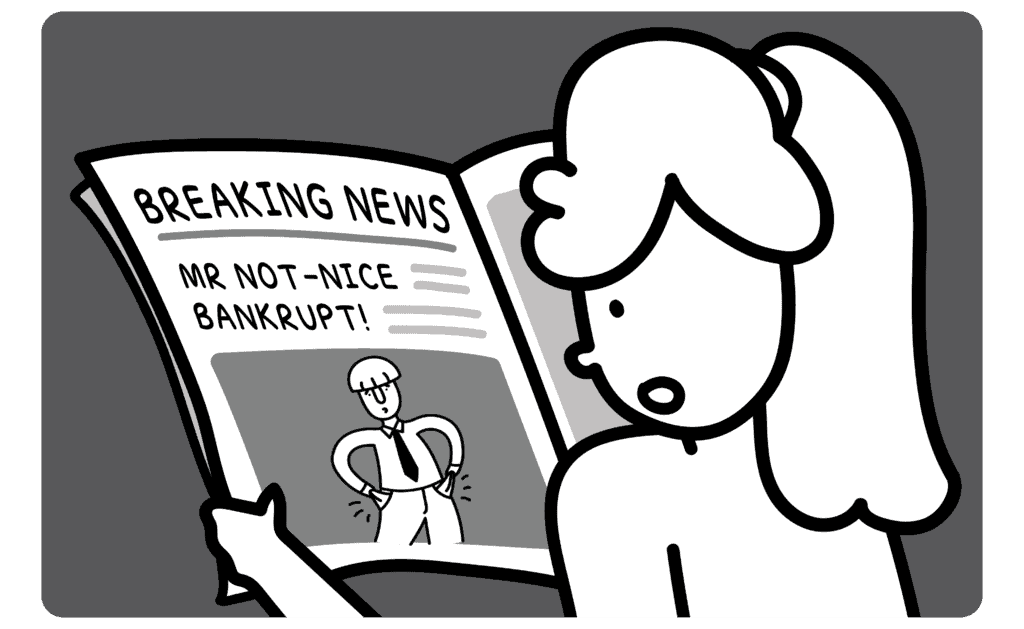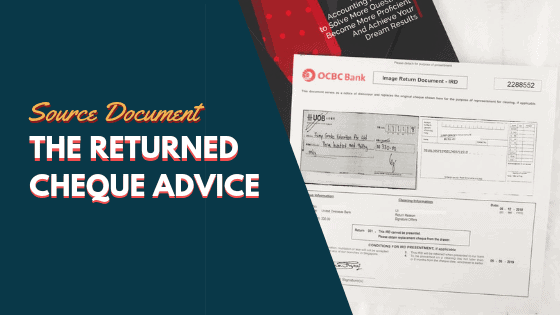Allowance for impairment of trade receivables
What is Allowance for impairment of trade receivables?
- The allowance for impairment of trade receivables estimates the percentage of accounts receivable that are expected to be uncollectible.
- The percentage estimated is usually based on historical credit loss experience
- An allowance for impairment of trade receivables is considered a “contra asset,” because it reduces the amount of current assets in the statement of financial position (or balance sheet).
- The allowance for impairment of trade receivables is shown in the assets section of the statement of financial position (Balance sheet) while the impairment loss on trade receivables is shown in the profit and loss portion of the statement of financial performance (Income statement).
- The actual payment experience or behavior of customers may differ substantially from the estimate.
- Recording the allowance for impairment of trade receivables at financial year end as the credit sales made during the year improves the accuracy of financial reports.
Why do businesses make an allowance for impairment of trade receivables?
A bad debt can happen to any small business who sells on credit terms. It is when a business has overdue receivables that may result in uncollectible debts, whether it is due to a slow economy or the customer filing bankruptcy. These default payments require
Accountants also need to comply with the following accounting principle:
To comply with matching principle by ensuring that possible losses incurred due to debts
estimated to be uncollectible are matched against current year income earned from these debtors in the same accounting period.
To comply with prudence theory by recording expected losses due to a fall in value of
assets as an expense (losses not understated) and to enable a more realistic trade
receivables balance to be reported in the Balance sheet (assets not overstated).

Recording the Allowance for Impairment on trade/accounts receivables
Two primary methods exist for estimating the dollar amount of accounts receivables not expected to be collected.
1. Percentage of Sales Method (7086/7087 POA Syllabus)
- The sales method applies a flat percentage to the total dollar amount of sales for the period.
- For example, based on historical experience, a company may expect that 3% of net sales are not collectible and provides that amount as a bad debt reserve
2. Specific Customer Method (7175/7088 POA Syllabus)
According to SEAB’s 7175 Principles of Accounts Syllabus, it was highlighted that in Singapore’s Financial Reporting Standard 39 on trade receivable:
• General provision is prohibited. Hence, provision for doubtful debts which is based on a percentage of or an estimated fixed amount of trade receivables is no longer permissible. The term ‘provision’ used in the FRS refers to a present obligation that arises from a past event, which therefore cannot be used in the context of reducing the amount collectible from trade receivables.
• Allowance for impairment of trade receivables is to be made by identifying specific customer whose debt may not be collectible in the immediate future
Creating an Allowance for Impairment Loss of Trade Receivables
Ira Company has a total Trade Receivables of $700,000 at the year’s end. The company decided to set up an Allowance for Impairment Loss on Trade Receivables at two percent of the entire Trade Receivables amount each year. The agreed rule is that the actual Impaired Loss on Trade Receivables does not go beyond the reserve. If it does, the firm will have to assess its actual collection performance again and decide on a new rate.
Take note that the percentage is used on the Trade Receivables amount after any Impairment Loss on Trade Receivables is written off. So, based on the given data, calculation of net trade receivables is as follows:
| Total Trade Receivables | $700,000 |
| Estimated uncollectible debts | 2% |
| Required allowance | $14,000 |
The journal entry for setting up the allowance is:
| Description | Dr. | Cr. |
| Impairment Loss on Trade Receivables (Adjustment) | $14,000 | |
| Allowance for Impairment Loss of Trade Receivables | $14,000 |
Increasing the Allowance
In the second year, the Trade Receivables balance of Ira Company is $750,000. The estimated uncollectable debts at 2% is $15,000. Thus, the increased credit losses is up by $1,000. The double entry is:
| Particulars | Dr. | Cr. |
| Impairment Loss on Trade Receivables (Adjustment) | $1,000 | |
| Allowance for Impairment Loss of Trade Receivables | $1,000 |
Decreasing the Allowance
In the third year, the Trade Receivables balance of Ira Company is $650,000. The rate remains at two percent because no actual Impaired Loss on Trade Receivables occurred. There is a need, though, to decrease the reserve balance by $2,000, from $15,000 in year 2 to $13,000 in year 3.
The impairment of accounts double entry is:
| Particulars | Dr. | Cr. |
| Allowance for Impairment Loss of Trade Receivables | $2,000 | |
| Reversal of Impairment Loss on Trade Receivables (Adjustment) | $2,000 |
Based on these cases, the ledger will take up the adjustments for the first two years as an operating expense in the Statement of Financial Performance since the adjustments reduce profit. In the third year, the adjustment reduced the allowance. It is treated as a “negative-expense” and increases profits.
The extracts of the financial statements for the three years would look like this:
Year 1: Creation of the Allowance for Impairment loss on trade receivable account:
Weds.SG Video Equipment
Statement of Financial Performance (income statement) for the year ended 31 December 2021 (extract)
| Less: other expenses | $ | $ |
| Impairment Loss on trade receivables | 14,000 |
Weds.SG Video Equipment
Statement of Financial Position as at 31 December 2021 (extract)
| Current assets | $ | $ |
| Trade Receivables | 700,000 | |
| Less: Allowance Impairment of Trade Receivables | 14,000 | |
| Net trade receivables | 686,000 |
Year 2: Recording the Adjusting Entry to INCREASE the Allowance for Impairment loss on trade receivable account:
Weds.SG Video Equipment
Statement of Financial Performance (income statement) for the year ended 31 December 2022 (extract)
| Less: other expenses | $ | $ |
| Reversal of impairment Loss on trade receivables | 1,000 |
Weds.SG Video Equipment
Statement of Financial Position as at 31 December 2022 (extract)
| Current assets | $ | $ |
| Trade Receivables | 750,000 | |
| Less: Allowance Impairment of Trade Receivables | 15,000 | 735,000 |
Year 3: Recording the Adjusting Entry for impairment loss to DECREASE the amount of Allowance for Impairment loss on trade receivable account:
Weds.SG Video Equipment
Statement of Financial Performance (income statement) for the year ended 31 December 2022 (extract)
| Less: other expenses | $ | $ |
| Reversal of impairment Loss on trade receivables | 2,000 |
Weds.SG Video Equipment
Statement of Financial Position as at 31 December 2021 (extract)
| Current assets | $ | $ |
| Trade Receivables | 650,000 | |
| Less: Allowance Impairment of Trade Receivables | 4,760 | 63,240 |
Notes on Net Trade Receivables
Net trade receivables is calculated based on trade receivables less allowance for impairment of trade receivables
In the 7175/7088 POA syllabus, this term is used in the presentation of trade receivables in the current asset section of the balance sheet to reflect bad debt provisions. This presentation is seen in the statement of financial position at at 31 December 2021
From the 7087/7086 POA syllabus (examinable from 2021), this term is no longer required. You can simply write the net trade receivable figure in the right column as seen in the statement of financial position extract as at 31 December 2022 and 2023.
Actual payment behavior of debtors
When a credit customer, whose debt that a business thought may be uncollectible in the prior period, makes a partial payment in the current period as full settlement of the debt as the customer has declared bankrupt, the portion of the debt that is not collected is written off to the allowance for impairment as trade receivables account.
The double entry for such debtor payment behavior is as follows:
| Particulars | Dr. | Cr. |
| Cash at bank | 2000 | |
| Allowance for Impairment Loss of Trade Receivables | 1000 | |
| Trade receivables | 3000 |
Ways to reduce uncollectible accounts and reduce bad debts expense on outstanding accounts from trade/ accounts receivables:
The following are ways a business can reduce irrecoverable debts.
These Credit Risk Management Practices will increase the probability of payment and improve future cash flows:
Check the credit worthiness of potential trade receivables
Monitor frequency of payment by trade receivables
Give cash discounts to encourage early payment







